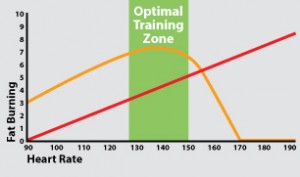10 Tips For Marathon Day
 Having run 45 marathons marathons and ultra-marathons now I have certainly learned a lot of lessons, some of which were very uncomfortable experiences. So I thought I might impart some of that leaning via this blog in a bid to make your marathon day all the more enjoyable.
Having run 45 marathons marathons and ultra-marathons now I have certainly learned a lot of lessons, some of which were very uncomfortable experiences. So I thought I might impart some of that leaning via this blog in a bid to make your marathon day all the more enjoyable.
1. ENTER! With everything from a 5km walk/run up to the full marathon there is something for almost everyone and it’s not too late to enter but you will have to be quick. It’s an exciting, motivating and inspiring event to be a part of. Not many people are fortunate enough to have an event like this in their home town so make the most of this great opportunity. If you are unable to enter anything, just come down check it out and soak up the good vibes.
2. PREPARE your kit the night before. Trust me; it is easy to get distracted by nerves and excitement on marathon morning. I set all my kit up the night before. Race number on my singlet, timing chip on my shoe and any accessories that I may need all set out on my dining table the night before. Make a little ritual out of it, have some fun and really savour the moment.
3. FAMILIARITY with everything you use on the day is important. Stick to what you know. Chugging down a drink that I have never trained with before has sent my stomach into evacuation mode. A lesson I have had to learn more than once and not a very nice experience in front of all those Gold Coast Marathon supporters.
Marathon day is definitely not the time to test out those new flash shoes that you have never worn before! It’s not the day to work on that new run technique you read about in a running magazine last week. Trying things for the first time on marathon day is a recipe for disaster. Make sure you are familiar with everything you use on marathon day including foods, shoes, clothing, running pace, running technique… everything.
4. FUEL FUEL FUEL! Whatever you are doing, your body will need fuel. Your needs will be dictated by the length of your event, how fast you are planning to run and how much carbohydrate your body burns while running at that pace. If you run out of carbs you are going to have a very slow finish to your race. Too much or inappropriate fuel and you risk a stomach upset.
As a general rule for the average person and depending on how your stomach copes, half marathoners will benefit from 30-60g of carbs per hour and full marathoners 60-90g of carbs per hour . Hopefully you have tested this out in training. There are so many ideas on what you should eat before and during these events. Ultimately YOU need a good source of carbohydrate that YOU find easy to digest. Make sure you are taking on carbs in the couple of days before also.
To get a bit technical, while doing the full marathon if you want to aim for 90g of carbs per hour then you need to use “multiple transportable carbohydrates”. This means a mix of glucose or maltodextrin and fructose, in the ratio 2:1 (2 parts glucose or maltodextrin and 1 part fructose). Of course this does not apply to those with fructose intolerance.
By the way, don’t overdo the fibre or you may find yourself taking a pit stop shortly after the gun goes off. In future if you have concerns about exactly what might be the best nutrition strategy for you, make an appointment with an experienced dietitian to get some expert advice.
5. HYDRATION is crucial. Dehydration will adversely affect your performance and can be dangerous for your health. However over-hydrating to a point of hyponatremia can be dangerous also. Fortunately the Gold Coast Marathon is very well supported with plenty of drink stations so take regular sips of water/sports drink at these and listen to your body. Personally I use mostly water and some Salt Stick capsules as I don’t really like the sports drinks.
Good preparation also means staying well hydrated in the days leading up to the marathon.
For more information on fuel and hydration check out the Sports Dietitians Australia website as well as the Carbohydrate – The Facts and Fluid – Who Needs It? pages on the AIS website.
6. PACE yourself. Standing on the start line is not the place to make decisions like all of a sudden slashing 15 minutes off your estimated finish time. When the gun goes off, the adrenaline pumps and it is tempting to take off like a rocket. This is NOT a good race plan. Your ego will play a massive game with you making it extremely hard to resist temptation. You need to conserve energy throughout the run so keep the excitement in check and maintain a sustainable pace for YOU.
Prior to marathon day, at a time that you are feeling quite level headed decide on a realistic finish time goal and set your pace accordingly. If you are concerned about judging your pace then locate the relevant pace runners at the start line and let them guide you.
7. LUBE UP! In one of my first marathons I experienced chaffing. I can assure you this experience with 15km still to run was extremely unpleasant and will never happen to me again. I apply heaps of vaseline before each marathon, it doesn’t feel that great and probably doesn’t look too good either but the chaffing is far worse. There are also lots of other anti-chafing solutions on the market like Body Glide, 3B and recently I have used SD Striderm with good success. Regardless of your intended chaffing prevention measure, ensure that you have given this a try prior to marathon day.
Similarly, if you are at risk of developing blisters then far better to tape up before the start than to be sitting on the side of the road at 35km trying to salvage what’s left of your foot.
8. SUPPORTERS Having supporters along the course always gives you a big boost. I spot a friend and instantly get that tingle up my spine that just lifts me for a while. Encourage friends and family to come down and cheer for you. Giving support to other runners will also give you (and them) a lift, that camaraderie among such a big group of runners is one of the things that makes this marathon such a great experience.
9. RECOVER sensibly. Make sure you rehydrate and re-fuel your body ASAP after your race. Sensible rehydration and refuelling strategies have been shown to improve recovery. Studies indicate that taking on protein is also an important part of recovery. If you are sick of water and sports drinks by the end of the race you could try some milk to help with rehydration. A wagyu burger at my local cafe is usually my first stop on the way home from the marathon.
10. SMILE for the cameras. You want your finisher’s photo to look good don’t you. You may not be feeling to good some of the times that cameras pop up in front of you but do try to force a smile out. It’s a marathon, there should be significant levels of discomfort involved so “suck it up” and smile. Just remember the pain is only temporary, the awesome feeling you get from completing your event is something you will havenforever after so make sure you have a happy pic to match.
More than just a series of running races, the Gold Coast marathon is a world class event. Savour the whole event in full from expo to finish line.
Good Luck have a great day from Mark, Therese and everyone at PhysioLogic.


